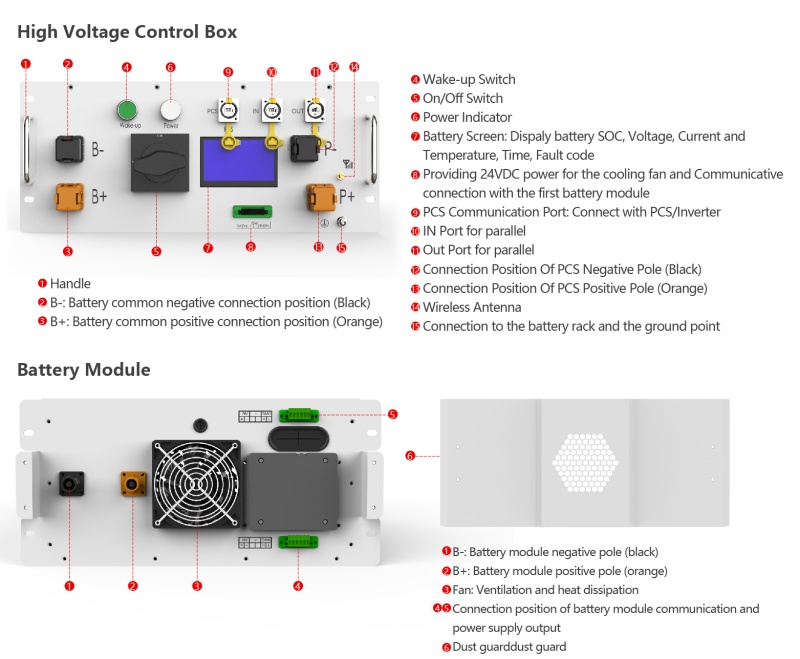Comunicación entre el Almacenamiento de energía BMS y el EMS
La pantalla de visualización de la unidad controladora maestra (BMS) muestra información sobre toda la pila de baterías PCS y transmite esta información al sistema de monitoreo (Servicios médicos de urgencia) a través de Ethernet (RJ45). Esta información incluye celda de batería, paquete de baterías, y la información del grupo de baterías.
Subir información:El BMS carga información de la celda (o grupo) de la batería, incluyendo: voltaje de la celda, voltaje del paquete de baterías, corriente de carga y descarga, SOC máximo de la celda, SOC mínimo de la celda, SOH mínimo de la celda, SOC del paquete de baterías, temperatura máxima de la celda, temperatura mínima de la celda, temperatura ambiente, así como alarmas de anormalidades de la batería e información de protección.
Recibir información:El BMS recibe parámetros de funcionamiento de la batería del sistema de monitoreo (EMSQ), como puntos de ajuste de protección de voltaje y alarma, puntos de ajuste de protección de temperatura y puntos de ajuste de protección de SOC y alarma.El servidor de administración BAMS admite el protocolo de comunicación MODBUS, que requiere una tabla de puntos de protocolo dedicada. La interfaz de comunicación es la red RJ45.
Comunicación entre el BMS de almacenamiento de energía y el PCS
Dado que el PCS solo se conecta a varios paquetes de baterías, los datos del BMS se agregan y se envían al BAMS. La comunicación entre el BAMS y el PCS es unidireccional: el BAMS actúa como maestro y el PCS como esclavo.
Transmisión de información BMSEl BMS transmite información como el estado de la batería y los niveles de alarma. Esto incluye el estado de carga máximo y mínimo del paquete de baterías, la capacidad máxima de carga y descarga, la temperatura ambiente y el estado de carga mínimo (SOH). Al recibir información de alarma del BMS, el PCS debe tomar las medidas de protección pertinentes.
Interfaz de comunicación:El PCS y el BMS utilizan una interfaz de comunicación CAN o RS485.
Información del nodo duroPara garantizar una protección oportuna y fiable, el sistema de almacenamiento de energía reserva nodos duros. Cuando el BMS detecta que el sistema de baterías ha alcanzado un límite de protección, transmite el valor límite de protección al PCS a través del nodo.
(Contacto seco: similar a un contacto duro, la diferencia es que un contacto duro se implementa mediante control de voltaje, mientras que un contacto seco se implementa mediante control de corriente. El contacto seco también se refiere a un contacto pasivo, que solo tiene salida de contacto y no tiene fuente de alimentación dentro del circuito de contacto. Contacto seco: un contacto duro significa que el contacto duro en sí no está cargado).
